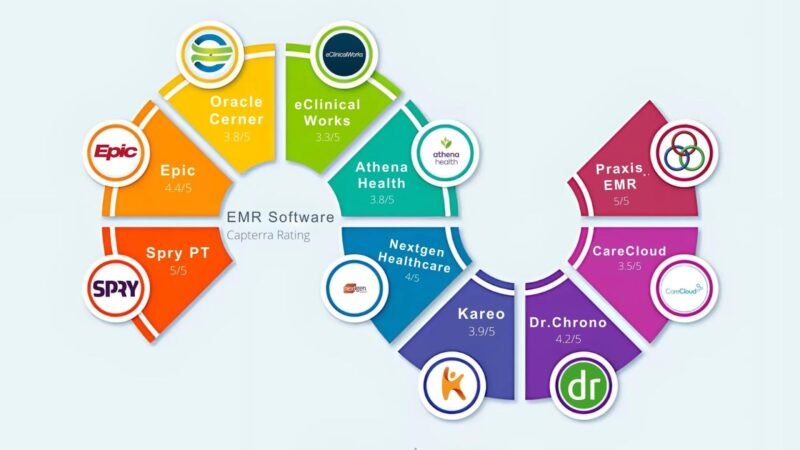How Interactive Content Helps You Achieve Your Marketing Goals

Achieving your Digital Marketing goals requires a continuous focus and constant adjustment of strategies. Should interactive content play a more important role in your company? After reading this post you will see that the answer is: yes!
The interactive content have been growing steadily in importance for brands and businesses of all sizes. However, many brands continue to believe that they do not have the resources to produce it consistently, so they give up and consequently diminish their value offer. In this post, we will show you how interactive content can help you achieve your Marketing goals. But first, let’s define our terms.
In the context of Digital Marketing , interactive content is any type of digital content that requires the active participation of your audience: clicking, dragging, responding , etc.
The term is a way of distinguishing interactive formats from passive or static content that users simply consume, such as text and images.
Interactive content, therefore, are essential elements to develop a solid and successful Digital Marketing strategy.
Next, we will tell you 8 benefits of interactive content that can help you achieve your Marketing goals:
- 1. They increase the time spent by users on the page.
- 2. Increase your CTR.
- 3. Optimize lead generation.
- 4. They improve the customer experience.
- 5. They promote engagement and brand awareness.
- 6. Increase sales.
- 7. They help you collect source data.
- 8. Make it easy to collect feedback.
- Bottom Line: Marketing goals are easier to achieve with interactive content.
Continue reading!
1. Increase the time of permanence of users on the page
An important metric that demonstrates the effectiveness of your website, and of your Marketing strategy as a whole, is the time spent on the page .
Increasing this metric does not have a magical result, but the probability of a conversion or sale certainly increases when readers really consider what you have to say.
If people leave as fast as they arrive, something is wrong. Your content may not be relevant, or just not interesting enough to get their attention.
There is a paradox or contradiction and that is that we managed to attract a reader through an organic search, but once you got the answer to your question, it immediately leaves .
By incorporating interactive content on your page, you give readers a reason to stay. There is something else to do, play, learn, or otherwise interact with, so some readers will stick around and engage with that content.
Again, the average time on page is usually not the end goal, but it is very important to measure how well you are attracting readers. And, with the right interactive content, more time on the page can mean increased conversions and / or sales.
2. Increase your CTR
The click-through rate, or CTR , is a crucial metric with which you can evaluate the success of your Marketing plan. In fact, increasing the CTR is usually one of the permanent goals of the Marketing of a company.
CTR is essentially the number of visitors who click on a landing page (such as the CTA link at the end of a post) after first reaching the original page, compared to the total number that landed on the original page. .
How do interactive content increase CTR?
Let’s say you write a blog post that answers the search intent of a common question in your industry. You’re going to end that blog post with a CTA , right?
That’s good practice, of course, but some readers will log out long before they get there.
But what if your CTA wasn’t just a paragraph at the end of a text-based post? What if the CTA was actually linked to a piece of interactive content?
Reserve that CTA for another type of click until the reader has engaged with a valuable piece of interactive content. Once you show him added value, he will generally generate more clicks, which will increase your CTR.
3. Optimize lead generation
Interactive content can also optimize lead generation, especially those that start with paid or organic search. Let’s say you want to attract leads through a blogpost with a CTA at the end.
But this time, instead of asking readers to click, you’re asking them to sign up or provide an email address, or something like that.
It is common practice to offer some kind of incentive for that lead generation. If you sell retail products, it could be a pop-up that says: Sign up now and get a percentage discount on your first order!
In the B2B universe, a more common approach is: Download this whitepaper! , which offers readers more in-depth and valuable content in exchange for a subscription.
Lead generation can be much more powerful and effective when you link it to interactive content.
If the goal is to collect email addresses, you can request an email record so that the user can access highly valuable interactive content, just as they would have done to obtain an ebook or whitepaper.
Or you can create some kind of questionnaire, like Find the ideal floor type!, Place it in the place of the CTA and save the actual CTA for the last step of the questionnaire, once you have captured the curiosity and interest of the users.
Whichever approach you take, almost any type of interactive content can have positive effects on your lead generation efforts.
4. Improve the customer experience
Marketers talk a lot about customer experience and for good reason: no matter how good your product is, if the experience of buying or getting it is horrible, many consumers will give up.
In other words, a great product that can only be purchased through a terrible, outdated, and unreliable website will be limited in scope.
Apple understands this better than everyone. Their stores are not designed solely to sell products, but create experiences and relationships that naturally end with product sales.
(Of course, it doesn’t hurt that the products are quality, and your conventional Marketing efforts certainly play a role as well.)
So how does this relate to interactive content? Simple. Your clients like to discover things for themselves .
If your audience has the choice between static product images and a 360-degree model that they can rotate, zoom and play: which one will they prefer?
Here’s another example: if you sell a variety of similar products, you could certainly create a slightly longer blogpost that describes which of your products is more suitable for different types of consumers. Some customers would even read it and make a purchase decision based on it.
But how much easier would it be (for the client, not necessarily for you) if that blog post was also an interactive quiz?
Your users love the idea of being in control of the experience. If they prefer to read it, let them. If they’d rather answer a series of questions (points you already mentioned in the blog post, by the way) and have a questionnaire telling them what to buy, that’s great too!
Again, these are just two examples. The real-world possibilities for enhancing the customer experience through interactive content are nearly endless.
5. They promote engagement and brand awareness
The engagement is another metric that can be difficult to define and, depending on how you define it , it is difficult to measure.
Definitions can vary, but in general, engagement refers to some type of visible public interaction, be it a comment on a post or an interaction through social media.
Not all companies depend equally on social engagement. It is much less important in B2B business than it is for direct-to-consumer brands, for example.
Engagement can be very difficult to develop naturally, and some companies just aren’t going to get much traction here.
We can give thanks for the local water treatment or the construction company that built the office building we work in, but we have no reason to follow them on social media and we would hardly ever share a social post from either of them.
That said, if engagement is a relevant metric for your business, you should develop it, or making it look natural seems almost impossible. Creating a highly engaging and socially valuable piece of interactive content is a great way to go.
An interesting survey, a fun quiz, or an eye-opening infographic are all options that might make sense in that context.
Once again, getting it right is difficult, you must create content that:
- be interesting;
- can be easily shared;
- that is sufficiently linked to your company to make a difference.
If you achieve these three attributes, interactive content can be an impressive way to drive engagement and brand awareness .
6. Increase sales
Interactive content can drive sales in two ways, one direct and one indirect. First, we will talk about direct drive. Go back to the example of an interactive quiz along with a longer blogpost.
Suppose the issue is which [pair of shoes / plates / phone case] is right for your style? Don’t just answer that question to a user.
Interactive content can be used as part of a sales funnel by providing a direct link to the product based on the results of the questionnaire. You can even provide a discount code on the results page.
You can also give an indirect boost to sales, especially for companies with more complex sales processes.
Interactive content is not always for direct sales, it is also useful for collecting data. We will talk more about this in the next point.
As users interact with your interactive content, they offer useful information about where they are in the shopping journey and what their needs or weaknesses are.
A current interaction on your site may not lead to a sale. It may not even be designed to do so.
But you can collect valuable data on the difficulties and needs of your customers and send it to your sales team to increase their performance.
7. They help you collect source data (First-Party Data)
As we mentioned before, your interactive content does not have to be solely for the education or entertainment of your customers. They can also be tools for data collection.
By collecting data on what your leads, prospects, and customers think about issues or what items they tend to prefer, you can make better data-driven decisions about the products you launch or the features you add.
How is this type of strategy actually executed?
The area of data collection through interactive content is a bit more complex and we do not have the space here to go into details.
We’ve put together a more detailed post on how interactive content can help your data collection efforts, so be sure to check it out for more information on this strategic approach.
It is also important to note that depending on where you are and where you do business, you may face additional regulations on data collection.
8. Make it easy to collect feedback
One part of the interactive content that many larger companies have had for many years is the feedback survey. Businesses know the value of collecting user feedback, and this type of pop-up survey is an effective way to do it.
Feedback polls can give users some control and independence, giving them the opportunity to express what they think about what works and what does not work on your website.
Most importantly, they provide genuine customer feedback that you can use to improve your business.
Conclusion: Marketing objectives are easier to achieve with interactive content
Whatever your Marketing goals, there is an excellent chance that adding more interactive content to your website will help you achieve one or more of those goals.
It may take a little more effort (or a strategic partnership with a content expertise company like ours), but it’s an investment that will pay off both now and for years to come.
If you want to learn more about interactive content and how it can help you achieve your Marketing goals , check out our Complete Guide to Interactive Content






